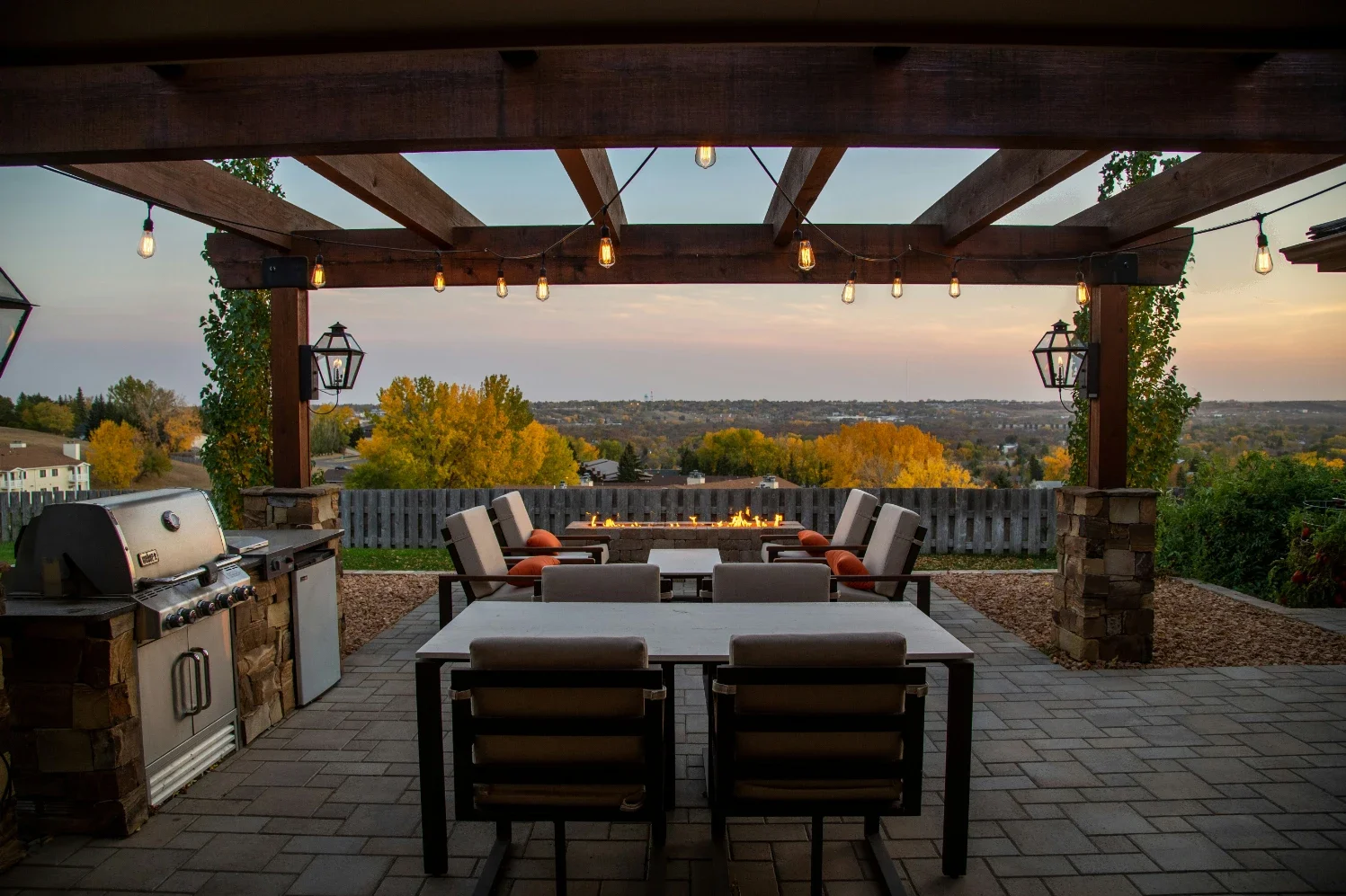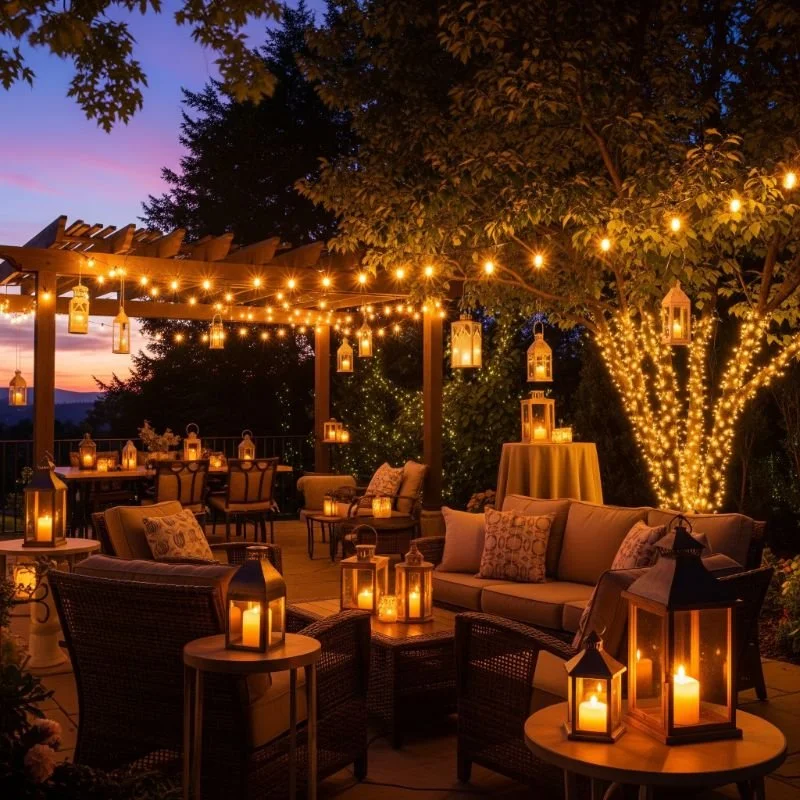Integrating a Functional Roof into Your Outdoor Pergola: A How-to Guide
Learn how to design a stylish and functional pergola roof that offers shade, protection, and elegance while enhancing your outdoor living space.
Creating an inviting outdoor area is one of the most satisfying home improvements you can make. Pergolas have long been a favorite feature for homeowners who want to define a space that balances openness with comfort. The structure adds architectural character, invites relaxation, and becomes a gathering spot for family and friends. Yet, what transforms pergolas from a simple frame into a year-round retreat is a well-designed roof. A functional roof protects against harsh sunlight and light rain, giving you the freedom to enjoy your outdoor setting in almost any season. This guide explores how to integrate a roof that complements your pergola’s design, maintains durability, and delivers the comfort you expect from an outdoor living area.
Look for Pergola Roof Ideas
When planning your outdoor retreat, spend time exploring creative roofing options that reflect your style and climate needs. The right design brings together visual appeal and functionality. Many homeowners begin by searching for inspiration online or visiting local showrooms to see materials firsthand. During this stage, it helps to visualize how the structure will work in harmony with your existing outdoor elements. You might come across ideas for retractable canopies, louvered panels, or fixed translucent sheets that filter sunlight without darkening the space. The options range from minimalist designs with clean lines to rustic wooden slats that invite a natural ambiance. When reviewing designs for a pergola, pay attention to how different materials interact with natural light and weather. For instance, polycarbonate panels allow soft light to pass through while blocking UV rays. A metal roof may deliver a more contemporary aesthetic and long-lasting strength, though it can amplify sound during rainfall. Fabric canopies bring flexibility, as they can be drawn open on bright days or closed for shade.
Choosing the Right Materials
The choice of roofing material defines the durability and maintenance level of your pergola. Wood remains a popular choice for its natural charm, but it requires sealing and periodic care to prevent warping or decay. Aluminum and steel offer sleek, modern looks and demand far less maintenance. Polycarbonate panels stand out for their ability to filter light while resisting impact and discoloration over time. Each option brings a different balance of cost, upkeep, and longevity.
Before selecting a material, think about how the pergola will function throughout the year. In a region with strong sun exposure, a roof that reflects heat will keep the space cooler. For areas that receive frequent rain, a design that channels water efficiently prevents pooling and long-term damage. The best materials not only protect but also complement the design language of your home. Matching roof color or texture with nearby architectural details can create a cohesive transition from indoors to outdoors.
Designing for Comfort and Function
Integrating a roof into your pergola is more than a visual choice; it directly affects comfort. The right roof provides shade, but too much coverage can trap heat or block airflow. Balance is key. For example, adjustable louvered roofs let you control sunlight and ventilation with a simple mechanism. When open, they allow a refreshing breeze; when closed, they create a solid barrier against rain or strong rays.
Think about how you intend to use the space throughout the day. A breakfast nook might benefit from softer morning light, while an evening entertaining area may call for integrated lighting or ceiling fans. Consider whether you need partial transparency to maintain a sense of openness. Some homeowners use tinted panels to soften light without fully darkening the area. Others prefer a combination approach - solid roofing on one side for shade and open beams on the other to preserve a view of the sky. Designing with these factors in mind helps create pergolas that remain comfortable in different conditions.
Incorporating Lighting and Ventilation
Lighting can transform pergolas into an inviting space after sunset. The roof provides an opportunity to conceal wiring for downlights or string lights, creating a warm and inviting atmosphere without visible cables. Recessed LED fixtures offer a sleek, modern appearance, while pendant lights or lanterns lend a more rustic charm. When planning the roof design, allocate areas for fixtures early in the process to avoid retrofitting challenges later.
Ventilation is equally crucial, especially in enclosed or semi-covered pergolas. Heat can accumulate under a solid roof, reducing comfort on warm days. Installing a ceiling fan or integrating roof vents helps maintain airflow. Louvers, mesh screens, or spaced slats also encourage natural circulation while keeping insects at bay. A thoughtful blend of lighting and ventilation transforms the pergola from a static structure into a truly livable extension of your home.
Managing Drainage and Weather Protection
A roofed pergola faces exposure to rain, wind, and seasonal shifts. Proper drainage is vital to maintain the structure’s integrity. Sloped roofs guide water toward gutters and downspouts, preventing pooling or drips at seating areas. For flat or semi-flat designs, hidden drainage systems can direct water away discreetly. Using waterproof sealants and corrosion-resistant fasteners enhances longevity and prevents leaks.
In windy regions, secure anchoring becomes crucial. Reinforced joints and posts keep the structure steady, while heavier roofing materials reduce vibration. Some modern pergolas feature sensor-based systems that automatically close louvers or retract canopies when rain begins. These solutions offer both protection and convenience, keeping your outdoor area usable without constant manual adjustments. Incorporating these functional elements during the planning phase ensures your pergola withstands seasonal challenges with minimal upkeep.
Blending Aesthetics with Functionality
A functional roof should not compromise visual appeal. The most successful pergola designs merge structure and style seamlessly. Matching the color palette of your home’s trim or siding helps create continuity. A wooden pergola with a metal or glass roof can strike a compelling balance between natural and contemporary design elements. Climbing plants or retractable drapes can soften sharp lines and bring texture to the finished look.
Lighting, furniture, and decorative details complete the setting. Pergolas that reflect your home’s personality feel like an extension rather than an addition. Whether you lean toward minimalist modernism or traditional craftsmanship, the roof design should echo that identity. Details such as exposed rafters, beams, or decorative brackets can tie the structure together. By blending aesthetics with practicality, your outdoor pergola becomes both a functional retreat and a focal point of design harmony.
Integrating a roof into your pergola transforms it from a seasonal feature into a year-round haven. A well-planned design balances comfort, durability, and beauty. The right roof invites relaxation, provides protection, and connects indoor and outdoor living in a seamless way. Thoughtful planning ensures that this outdoor space serves not just as a shelter but as a welcoming environment where moments are shared, mornings are calm, and evenings carry an effortless sense of ease.




